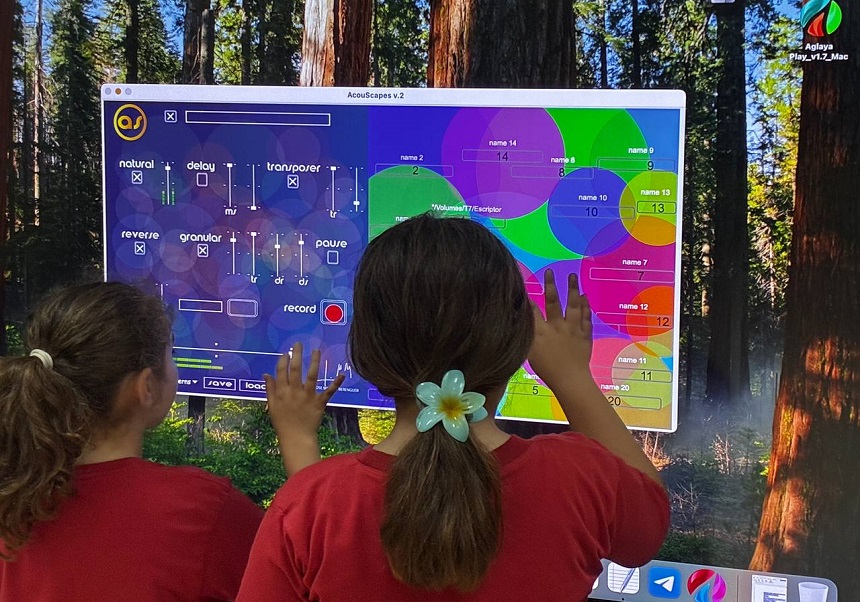
Researchers from the Institute of Creativity and Educational Innovation at the University of Valencia, co-creators of the Aglaya Play and Acouscapes project, inclusive technologies for sound creation, formalized their collaboration with the Chair of Digital Divide and Disability at the Polytechnic University of Valencia on June 16th.
This project was promoted by Adolf Murillo, professor of music education and researcher at the Institute of Creativity and Educational Innovation, together with Chele Esteve, director of the Chair of Digital Divide and Disability at the UPV, Emilio Espí, deputy director, and professor and artist Rafel Arnal (University of Zaragoza).
The main objective of the project is to develop and adapt the Aglaya and Acouscapes digital environments to universal accessibility criteria, allowing their use by people with different disability profiles. It also seeks to validate inclusive artistic methodologies such as Artistic Project-Based Learning (APBL), promoting meaningful creative processes in diverse contexts. Another major objective is to evaluate the impact these technologies can have on bridging the digital divide in the field of artistic and musical education, encouraging the active participation of traditionally excluded groups.
Currently, the project team is working on the technical review and functional improvement of the software, applying accessibility principles to ensure an inclusive experience. In parallel, the prototyping of experimental sound instruments adapted to different types of functional diversity is being developed. These actions are being implemented in pilot workshops held in educational and cultural centers, where qualitative and audiovisual information is collected on the creative process and interaction with the tools. In addition, a technical feasibility study is being conducted to evaluate the possibility of registering a patent or utility model associated with the developed innovations.
Among the expected results is the preparation of a technical report documenting the findings of the pilot and their impact on the participants. A scientific article focusing on inclusive technological innovation applied to sound creation is also expected to be published. For dissemination purposes, an audiovisual study will be produced that will capture testimonials, experiences, and best practices that emerged during the project. To facilitate its implementation, an accessible technical guide will be developed to enable the software's application in educational and community contexts. Finally, a proposal for a patent or innovation registration will be submitted and the results will be disseminated at conferences specializing in sound art, accessibility, and inclusive education.
The project also includes free distribution of the software through digital stores and accessible platforms, as well as the possibility of facilitating its direct download through various institutional and collaborative channels. The main objective of this strategy is to promote its adoption in real-world contexts, especially in educational, community, and therapeutic settings, where it can have a significant impact on digital inclusion and equitable access to creative and technological tools. The next phase includes project validation with CERMI (the Spanish Committee of Representatives of People with Disabilities) of the Valencian Community, a leading organization in the defense of the rights and inclusion of people with disabilities. Their participation ensures that the resources developed effectively respond to the real needs of people with disabilities.
With this initiative, the DicaTIC Chair, together with the Institute for Creativity and Educational Innovations, reinforces its commitment to universal design that promotes new forms of participation, expression, and access to culture based on diversity







